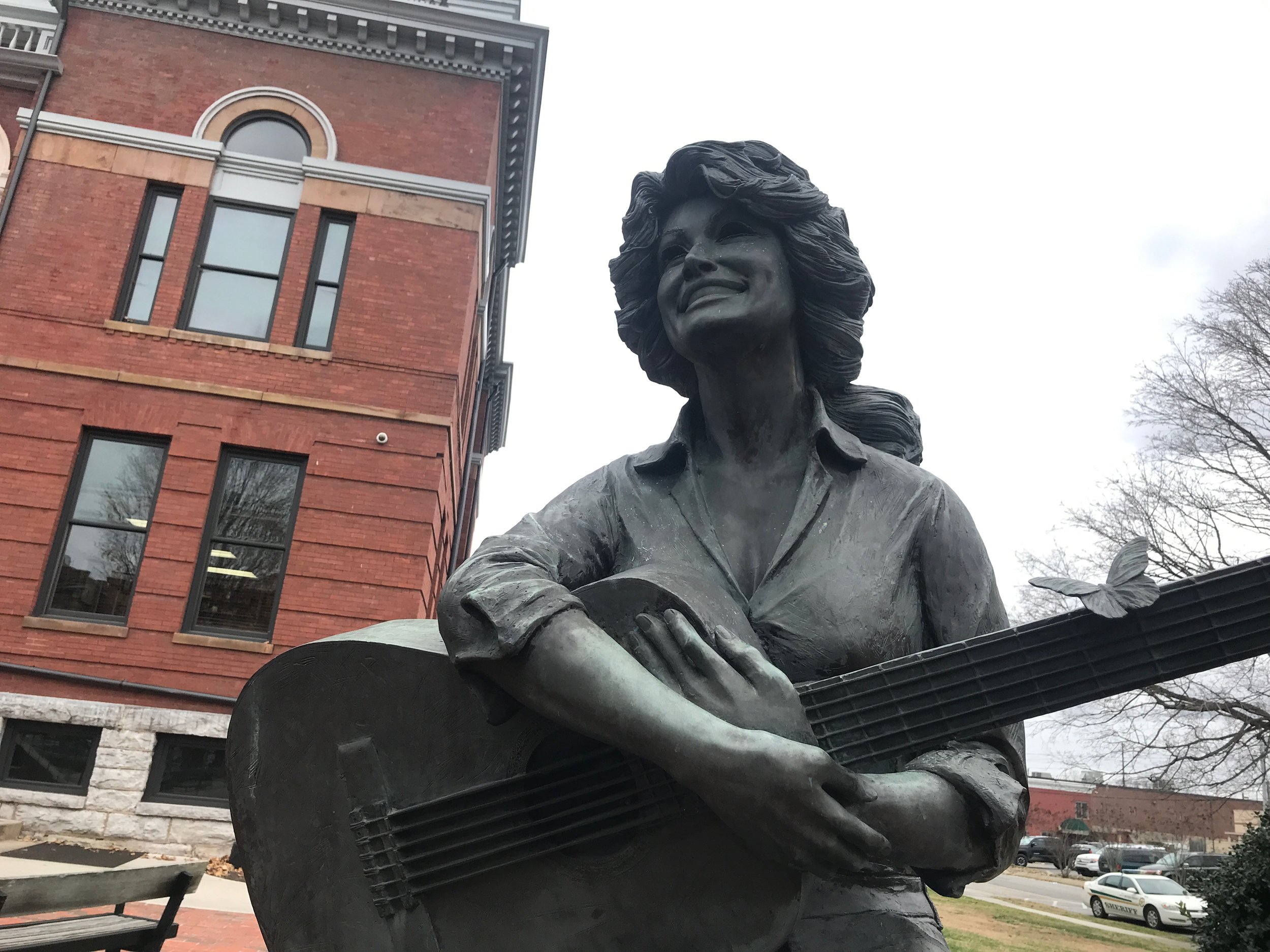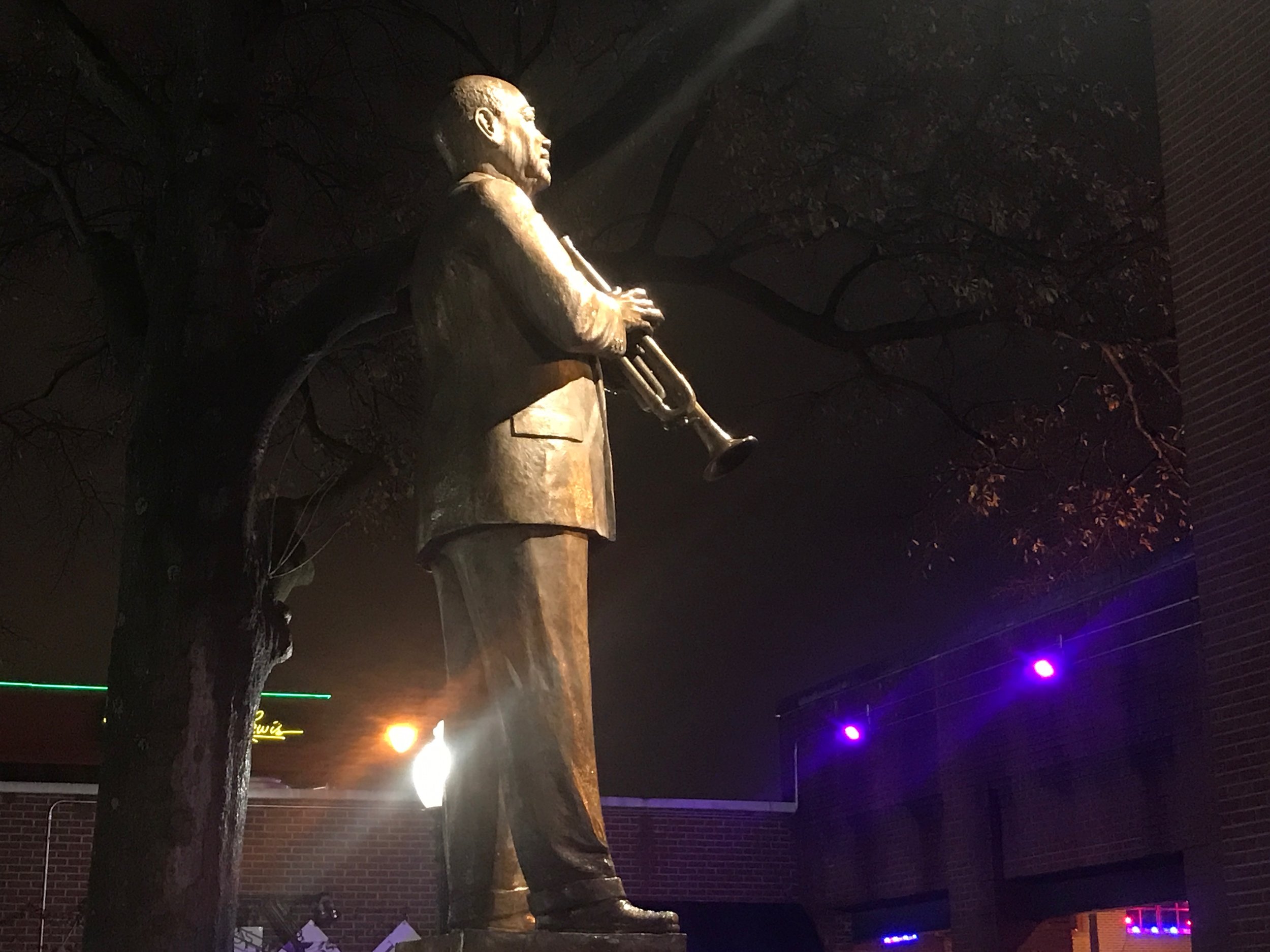The three states of Tennessee
By Rick Holmes
Jan. 4, 2019
Nashville, Tenn. – The Tennessee state flag features three white stars in a blue circle on a field of red. There’s a reason for that: In Tennessee, important things come in threes.
Tennessee has given the nation three presidents: Andrew Jackson, a populist hothead – he fought more than 100 duels – Jackson drove the Native Americans out of the Southeast. James K. Polk cooked up an excuse to invade Mexico and seize half its territory, thus fulfilling America’s “Manifest Destiny.” Andrew Johnson succeeded the assassinated Abraham Lincoln and did his best to undo Lincoln’s legacy, opposing voting rights for freed slaves in terms that would make a Klansman blush.
The stars on the state flag stand for the state’s three Grand Divisions: East Tennessee, Middle Tennessee and West Tennessee. Each has a distinctive topography, its own story and its own musical tradition. Tennessee’s greatest gifts to the nation are musical.
East Tennessee is mostly mountains, some of them magnificent. If you haven’t visited the Great Smoky Mountains National Park, you’re overdue. The region’s major city is Knoxville, home of the University of Tennessee and its beloved Volunteers.
Those mountains were settled by scrappy people who built small farms on rocky soil. Cows still graze on pastures that are nearly vertical. There was no need for slaves to work those farms, nor money to purchase them. East Tennessee opposed Secession, but got outvoted. It was mostly pro-Union during the war, and has voted Republican ever since.
The Scotch-Irish settlers of East Tennessee brought fiddles and folksongs with them from the British Isles, and in their isolation developed American mountain music and bluegrass. The reigning queen of East Tennessee is Dolly Parton, who grew up in the foothills of the Smokies and has turned that musical tradition, her own talent and an entrepreneurial spirit into an entertainment empire.
I started my reporting career in the Smokies, back before Dollywood made Pigeon Forge one of the nation’s top tourist destinations. I remember interviewing her about a small project she was launching to provide free books to pre-school children in Sevier County. The project was inspired by her father’s inability to read and write and by the influence books had on her own childhood. She has since given away more than 100 million books to kids around the world.
Middle Tennessee is a place of rolling hills and plantations. It’s the largest of the Grand Divisions in land and population. Its main city is Nashville, which is also the state capital. Nashville is booming, with new people moving in every day, and new jobs in tech, health and, of course, music.
Nashville became the capital of country music thanks to a radio station, WSM, and its live show, the Grand Ole Opry, which has been on the air since 1925. Nashville producers took the banjo and fiddle out of mountain music, replacing them with strings, drums and pedal steel guitar. The sound that grew up here became a global cultural force.
Western Tennessee is flat and fertile. Memphis, its major city, is at the top of the Mississippi Delta – the land of cotton and the birthplace of the blues. Memphis is also the birthplace of rockabilly, rock ‘n roll, rhythm and blues, and soul. Musical currents in Memphis run as strong and unpredictably as the Mississippi.
Two years ago, I stood on a bluff overlooking the Mississippi before a statue of Jefferson Davis and thought about Tennessee’s dark history of racism. In 1864, Confederate troops overran Fort Pillow, north of Memphis, and proceeded to massacre hundreds of African American Union troops who were trying to surrender. In 1865, the Ku Klux Klan was founded in Pulaski, south of Nashville. In 1866, white mobs attacked black neighborhoods in Memphis, killing 46, raping and assaulting many more, destroying homes and churches. A hundred years later, a single white man assassinated Martin Luther King Jr. at the Lorraine Motel. And here was a statue just a few miles away from the Lorraine hailing the president of the Confederacy as “a True American Patriot.”
I returned to that spot last month and the statue was gone, removed by Memphis city officials determined not to erase history, but to celebrate more deserving figures. A statue of W.C. Handy on Beale Street celebrates the man who brought the blues to Memphis. The Lorraine Motel is now the National Civil Rights Museum, celebrating all who brought a rebirth of freedom to Tennessee and the nation.
Today you’ll hear every kind of music played in every corner of Tennessee. New people are moving in, old attitudes dying out. New history is being made. Tennessee is still telling America’s story, singing America’s song.
Rick Holmes can be reached at rick@rickholmes.net. You can follow his journey at www.rickholmes.net. Like him on Facebook at Holmes & Co, on follow him on Twitter @HolmesAndCo.



